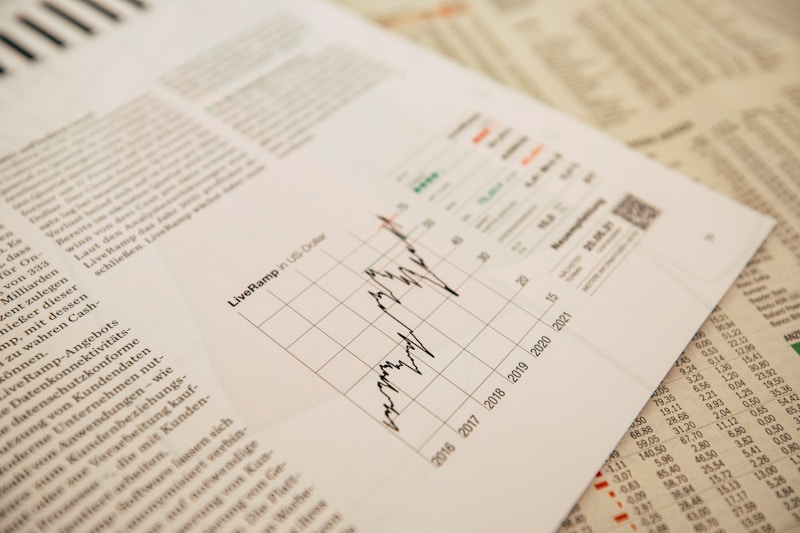Questions and Answers
What type of report can you use to obtain information about a company's preferred shares?
Individual company annual reports.
How can a change in the rating of preferred shares impact their market price?
An unexpected downgrade usually has negative implications, while an upgrade is favorable.
What features should you consider when selecting preferred shares?
Cumulative dividends, sinking funds, and protective provisions.
What is a crucial consideration when evaluating the yield from preferred shares?
Signup and view all the answers
What additional questions should be asked if the preferred shares are convertible?
Signup and view all the answers
How does the market price of common stock relate to the conversion privilege of preferred shares?
Signup and view all the answers
Why is research coverage by investment firms important for preferred shares?
Signup and view all the answers
What is the implication of having a longer life for the conversion privilege?
Signup and view all the answers
What is the total capitalization of both Company A and Company B?
Signup and view all the answers
How do you calculate the percentage return on common shares for Company A in Year One?
Signup and view all the answers
What is the formula for determining the Earnings Per Share (EPS) for Company B in Year One?
Signup and view all the answers
Why is the stock of Company A considered less risky than that of Company B?
Signup and view all the answers
What are the primary components of Company B's capitalization?
Signup and view all the answers
What is the percentage return on common shares for Company B in Year One?
Signup and view all the answers
What impact does the business cycle have on the stock prices of Company A and Company B?
Signup and view all the answers
What qualitative factors should be considered when analyzing a company's stock?
Signup and view all the answers
How does the Dividend Discount Model (DDM) apply to Company A and Company B?
Signup and view all the answers
In terms of financial ratios, what is a key difference between Company A and Company B?
Signup and view all the answers
What is the profit per share for Company ABC before adjusting for diluted earnings?
Signup and view all the answers
How does the fully diluted EPS change after accounting for warrants?
Signup and view all the answers
Why might directors of a company decide to pay dividends even in growth companies?
Signup and view all the answers
What factors influence shareholders' decision regarding dividends when profits are low?
Signup and view all the answers
What is the importance of describing earnings in terms of common shares?
Signup and view all the answers
What does the Dividend Discount Model (DDM) indicate about a stock's intrinsic value?
Signup and view all the answers
How is intrinsic value calculated using DDM?
Signup and view all the answers
If a stock is selling at $25 while its intrinsic value is $33.33, how should investors perceive it?
Signup and view all the answers
What happens to stock prices during an economic downturn according to the business cycle?
Signup and view all the answers
Why are preferred shares evaluated differently than common shares?
Signup and view all the answers
What is one critical question when assessing the investment quality of preferred shares?
Signup and view all the answers
How can comparing financial ratios help investors make better investment decisions?
Signup and view all the answers
What does it mean if a company’s financial ratios are significantly better than its competitor's?
Signup and view all the answers
What key aspects influence the required return (r) in the DDM?
Signup and view all the answers
What does a growth rate (g) in the DDM signify?
Signup and view all the answers
What is the per common share earnings for Company A in Year Two?
Signup and view all the answers
How much were the preferred dividends for Company B each year?
Signup and view all the answers
In which year did Company B have no earnings available for common shareholders?
Signup and view all the answers
What is the percentage return earned on common shares for Company B in Year Two?
Signup and view all the answers
What was the effect of leverage on the per common share earnings of Company A in Year One?
Signup and view all the answers
How did the earnings available for common shares change from Year One to Year Three for Company A?
Signup and view all the answers
What was Company B's per common share earnings in Year One?
Signup and view all the answers
Which company experienced a greater percentage increase in return on common shares from Year One to Year Two?
Signup and view all the answers
For Company A, what factors contribute to the percentage of return earned on common shares?
Signup and view all the answers
What was the total earnings available for dividends for both companies in Year One?
Signup and view all the answers
Study Notes
Credit Assessment of Preferred Shares
- Preferred shares may receive ratings from recognized securities rating services, similar to bonds.
- Ratings influence the market price of preferred shares; downgrades typically lead to price declines while upgrades can enhance prices.
Selecting Preferred Shares
- When evaluating preferred shares, consider marketability, trading volume, and research coverage.
- Investigate specific features like cumulative dividends and sinking funds.
- Determine if the yield is acceptable compared to similar investments.
- For convertible preferred shares, assess:
- The outlook for the underlying common stock.
- The timing of the conversion privilege relative to market price movements.
Dividend Discount Model (DDM)
- The intrinsic value of a stock can be calculated using DDM; exemplified by:
- Formula: Price = Div1 / (r - g)
- Example calculation gives an intrinsic value of $33.33 for expected dividends.
- Market price comparison indicates investment attractiveness:
- Stock is undervalued if priced below intrinsic value ($25).
- Stock is overvalued if priced above intrinsic value ($40).
Company Analysis
- Practice company analysis using examples like fictitious NFR Inc., calculating various ratios.
- Comparison of performance can highlight better investment opportunities.
Assessing Preferred Share Investment Quality
- Preferred shares differ from common shares: they offer fixed dividends and no voting rights.
- Assessment focuses on:
- Earnings sufficiency to cover preferred dividends.
Example Company Earnings Analysis
- Companies A and B both have $1 million in capitalization.
- Company A's common shares yield: Year One 5%, Year Two 10%, Year Three 2.5% (no preferred dividends).
- Company B needs to pay preferred dividends; the earnings available for common shareholders are more constrained.
- Example illustrates Company A is less risky due to no leverage and more stable earnings.
Impact of Leverage on Earnings
- Preferred shares can affect earnings per share (EPS) due to leverage:
- Company A: No leverage means all earnings available for common dividends.
- Company B: With 50% leverage, earnings available for common shares decrease after paying preferred dividends.
Fully Diluted Earnings Per Share (EPS)
- Calculated by adjusting the number of shares for potential conversions (e.g., warrants).
- Example shows adjusted profit leads to fully diluted EPS of $3.37, reflecting the company’s profitability per common share.
Dividend Payment Consideration
- Shareholders must evaluate profit levels to predict dividend distributions.
- High profitability generally leads to higher dividends, while losses may result in no dividends issued.
- The Trans-Canada Retail Stores case reflects a common share earning of $3.12, serving as a benchmark for assessing dividend potential.
Studying That Suits You
Use AI to generate personalized quizzes and flashcards to suit your learning preferences.
Description
This quiz focuses on understanding how to assess credit ratings of companies and their preferred shares using annual reports. You will explore the significance of these ratings and the impact of changes on investment decisions. Prepare to dive into the world of securities rating services.




